Shareholder Decisions and Annual Yacht Competition
6 Comments Published by Dr. Beyster April 23rd, 2009 in SAIC, San Diego.Last week I read with interest the proposal to the shareholders of SAIC from the board regarding elimination of the preferred class of stock and conversion of all such shares to common stock. I gather there has not been a lot of employee opposition to this. I for one feel that, given the fact that SAIC is now a public company and subject to all kinds of rules and regulations, it would probably be beneficial to the shareholders to have the stock totally liquid. This a major step for SAIC, and it’s one I opposed when I was chairman of the board — knowing that this is eventually what would happen and feeling that we could continue to manage SAIC as an employee-owned company.
The only disadvantage I see for the shareholders who hold preferred stock has to do with their voting rights — they sacrifice their current 10:1 voting preference. As far as I can see, they will not lose economic value with the change. This is what I think as of today. If I was a preferred shareholder, I would check with my financial advisor on whether I was giving up anything else. I guess you have some time to make your decision.
Last weekend was very eventful and interesting for me. Sunday was opening day at the yacht club and we entered Solutions in the annual competition for best boat. The crew that maintains Solutions worked overtime getting everything ready — there wasn’t a speck on it. As a result, we won an award for best boat in class as well as best overall boat in the competition. I now have a nice plaque to mount on the boat indicating this accomplishment. About 50 people paraded down to the dock to look at the boat and marvel at its beauty. I have included some photos of the event. I would like to thank Ron Arnold — the skipper of Solutions — who worked tirelessly to get the boat into Bristol shape, along with the rest of the crew.
I was asked by SAIC to write some words on the occasion of the company’s 40th anniversary. I thought you might find my letter to SAIC’s employees to be of interest if you haven’t already seen it:
To the Employees of SAIC:
It’s hard for me to believe that just 40 years ago, a small handful of scientists and I founded this great company known as SAIC. In our first fiscal year of operations, the company’s revenue was just about $250,000. This year, revenues will reach $10 billion. That is a remarkable number to me. Little could I ever dream that this company we built with much dedication, hard work, and talent would experience success of this magnitude.
But, when I take time to reflect, I know that I should not be surprised at all. Without exception, SAIC’s employees are among the most innovative, the smartest, and the most entrepreneurial people in our nation. SAIC was created to solve complex problems of national importance, applying the unshakable core values of ethics and integrity. We never shrank from our duty to our great nation, indeed, we embraced it. This has been the case since Day One, and it is still the case today.
I am personally honored to congratulate each one of you who have helped build this great employee-owned company of ours. I have had the good fortune to work with many of you over the years. And while I toast the success we have enjoyed over the past 40 years, I know that SAIC—and the men and women who are its true heart and soul—will continue to lead the way in innovation and value to our customers for the next 40 years, and beyond.
I salute you.
J. Robert Beyster
Founder, SAIC
Chairman, The Foundation for Enterprise Development
www.fed.org
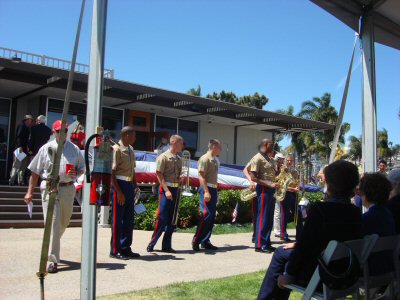


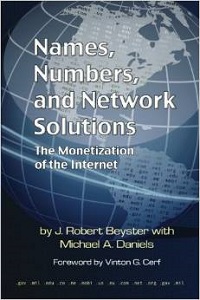
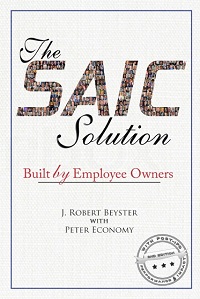
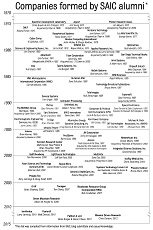
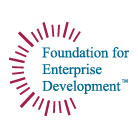
Dr. Beyster,
Thanks for your comments. I was actually wondering what you would think about the changes in the SAIC stock program. It is disappointing to see the direction the company is going away from employee-ownership and the attempt to redefine it, but I can understand the goal of trying to be more profitable. I find it very interesting to plot the stock price over time from the 70′s up to the IPO and compare it to the time since the IPO. The trend is vastly different and it seems that the incentives from owning stock in SAIC have decreased. This decreases managment’s ability to reward employees with vesting stock and stock options (stock options 2.5 years ago in the $17 range are basically worth nothing). Hopefully the board is right that going to a single class of stock will improve the outlook to investors, but it is concerning to think of the loss of ownership from the employees to outside investors and the resulting requirement to focus on short-term results over long-term growth. I also can’t help being reminded of your story of the investors that profited from the company’s earliest success and how that drove you to employee ownership.
My only other concern is that SAIC employees don’t leave SAIC to work for other promising small companies that offer true employee ownership programs.
Thanks again & congratulations on your award,
CJG
Good words, Bob.
Thanks – Kay
Yes, I agree. Thank you, Dr. Beyster, for your thoughts about the proposed stock restructuring. It seems the company’s needs were met, so it’s time to change – no worries about the employees or employee ownership. Rather sad to me as this marks yet another way SAIC is looking less special and more like any ol’ big company. Clearly, I’ve become one of the dinosaurs!
Again, thank you for your thoughts!
Dr. Beyster,
I was interested to learn your thoughts concerning the proposal for restructuring our stock. I do not appreciate the reasons that have been offered by the Board and senior officers in support of the proposal, and require something more in exchange for our last vestige of employee ownership. I’m an employee consultant now, after 25 years with SAIC.
Thank you, for all that you have done for us.
David Amstutz, Ph.D.
McLean, Virginia
Noting too surprising here. Google had the 10-1 structure too. I don’t
know if they still do. I also would not imagine this would affect
stock price much unless there is some history of employees actually
using these votes in a way other investors do not like. I wonder if
there have been any actual complaints about this from investors or
investors saying they downgraded the stock because of it. It doesn’t
seem like the stock has done poorly relative to the market in the last
two years. Still, there is undoubtedly a perception among shareholders that inside control of a company is bad. That seems ironic in light of what seems like a major market failure in public companies. The innate pressure on quarter-to-quarter (if that) stock price performance has led many companies to take unsound risks and avid investments for the long term. By having employee ownership, a company is better able to commit to what will make the company successful years from now.
But the board clearly wants to move away from employee ownership
thinking. It is very rare for a majority employee ownership company to go public and not become just like any other public company.I think who controls SAIC is a moot issue — the employees probably realistically could not have controlled it at any voting strength given the board’s focus (even with full voting rights, it is very hard for employee shareholders to gather enough unity, commitment, and effort to oust a sitting board. More important, from what I hear and observe, the company has chosen to move far away from employee ownership as an essential part of day-to-day culture. It’s not impossible to have that culture in a public company — think Southwest, Starbucks, Google, Whole Foods, Green Mountain Coffee (one of the top 10 stocks in the last few years), P&G (since the late 1890s!) et.
al. I fear SAIC is rapidly moving away from that, and no voting arrangement will make a dent in that.
That’s all very sad, but it cannot and should not overshadow the fact that Bob Beyster built an extraordinary place that for decades maintained that kind of culture provide people with huge professional, personal, and financial rewards along the way, becoming a model for many other companies.
David: Thank you for your blog post. As I said before on this blog, I’m not sure about all the reasons the board is making its recommendation. I suggest you check with your legal and financial advisors on it. It seems to me that your preferred stock now has a 10:1 voting advantage that will be given up if the recommendation succeeds. This may not be important to you, but if it is, you should decide what to do. — Bob